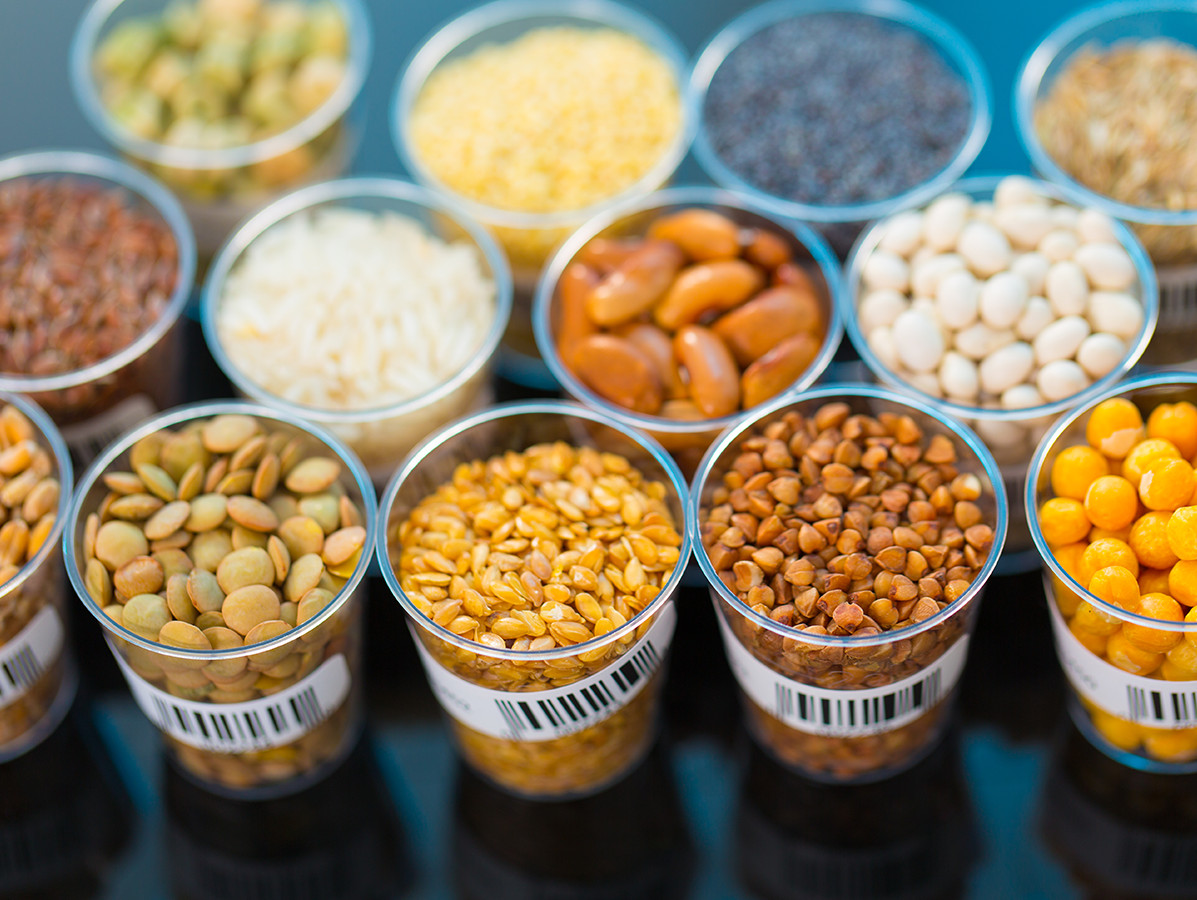
Agriculture and livestock farming are responsible for a substantial part of our impact on the environment: globally, these sectors account for some 20% of greenhouse gas emissions (FAO, 2016). In order to meet the climate targets set in Paris, and because it fits in with a healthy diet, the Food Centre and the Health Council of the Netherlands, among others, stimulate the Dutch to reduce their meat consumption and to obtain more protein from vegetable sources. The protein transition is in full swing. What are the biggest challenges for the industry?
All kinds of food companies, both established names and new start-ups, are working on the development and sale of vegetable alternatives to meat and dairy. For example, last autumn VION introduced Me-At; a soy-based vegetarian product line. Meat company Equinox introduced hybrid meat with oyster mushrooms. Stegeman developed sandwich fillings in which part of the meat has been replaced by vegetables, and develops entirely vegetarian meat products and meat substitutes. Newcomers storm the vegatarian and vegan market: BeefyGreen processes the heart of oyster mushrooms into vegetarian and hybrid products (a part of the mushroom that is usually thrown away as a waste stream or used as animal feed). Jaap Korteweg threw himself into a new adventure this spring with Niko Kofferman and founded 'Those Vegan Cowboys': a company that will develop vegetable dairy substitutes. Together with Givaudan and Kraft Heinz, TOP is developing a factory line to make beef substitutes on a large scale.
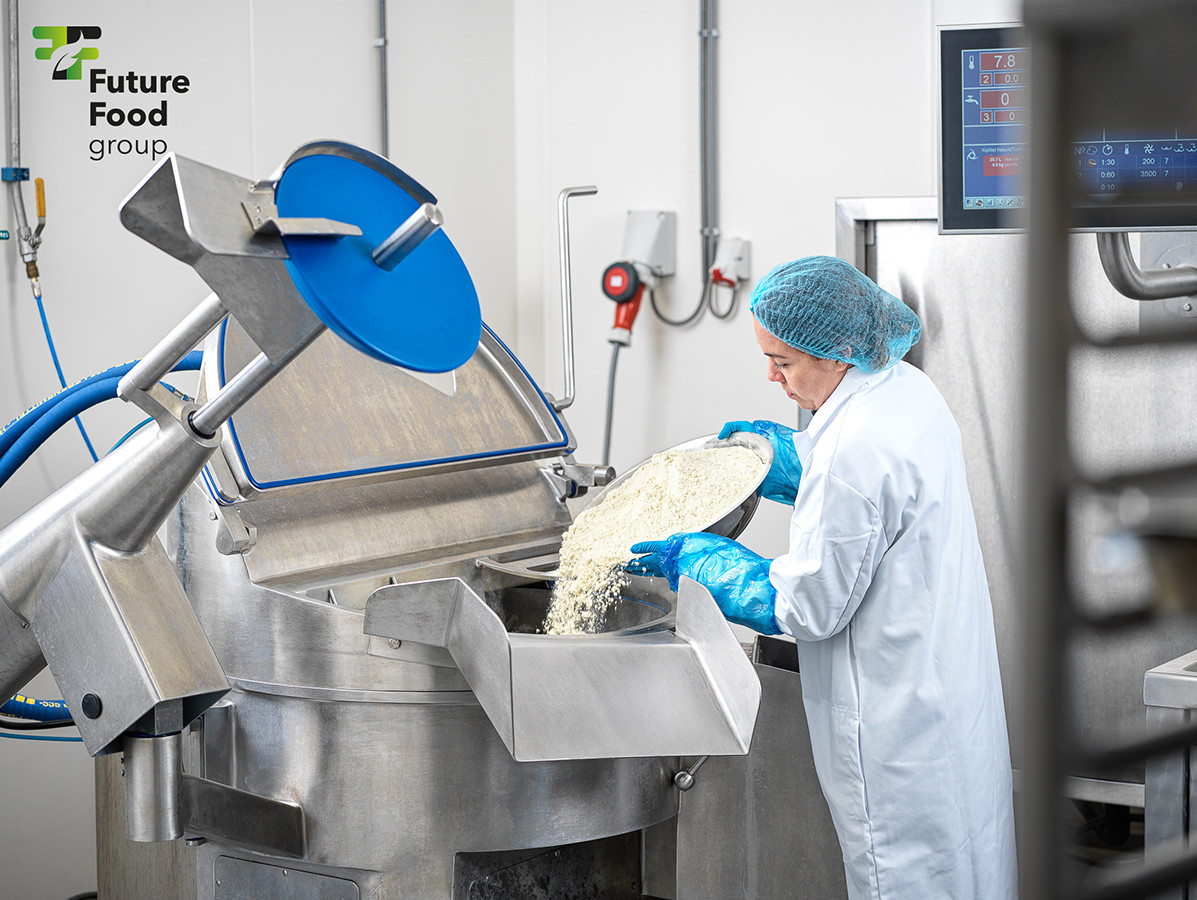
© Future Food Group
For this trend and development article we asked three producers about their experiences:
- Jan Zandbergen Group is a European distributor of the English start-up Moving Mountains Foods. In addition, Jan Zandbergen has its own innovation and development center: 'the Future Food Group' (FFG). Not only are the Future Farm products packaged and distributed here, but the team also develops and produces its own products under the PLNT brand name. A team of experienced butchers and product developers is working there every day on tomorrow's food. "Our goal is to surprise meat eaters with convincing products that are no longer under discussion in terms of taste, mouthfeel, satiety, nutritional value, price, etcetera. The choice for a separate center is a conscious one, says innovation manager Jos Havekotte: "This is how we maintain focus in the protein transition. Physical separation of meat and meat replacement activities also plays a role. We don't want contamination to occur."
-Zandbergen World's Finest Meat has been taking care of the European distribution for Beyond Meat since 2018. The new production facility for the brand in Zoeterwoude went into operation in June. Beyond Meat will soon also open a location in Enschede, where the ingredients will be made that are processed into the final product in Zoeterwoude. The factory in Zoeterwoude is owned by Zandbergen WFM, Enschede will become the property of Beyond Meat. Beyond Meat director Chuck Muth calls the investment a logical step: "The industry will continue to grow, certainly in the next five years", he predicts. "The vegetable industry is one of constant innovation and improvement. To stay ahead, R&D and innovation are therefore key elements in our business strategy. Our R&D team consists of more than 100 experts; from PhD students, chemists and engineers to chefs and food scientists. We believe that what we're doing is urgent and important and we're striving for a global shift in the way people define and consume meat".
-Ojah b.v. in Gelderland also dreams of a vegetable revolution. With the production of sustainable, vegetable protein products, they want to stimulate this transition as much as possible.
The producer of, among others, Beeter® and Plenti makes vegetable meat substitutes for various brands that are supplied all over the world. Joeri Hollink, Head of Product Development, believes in the power of co-creation and the synergy of collaboration. "Together you achieve much more than alone. Our specialty is the extrusion and further processing of vegetable proteins. In particular, we have produced many chicken-like textures based on soy protein".
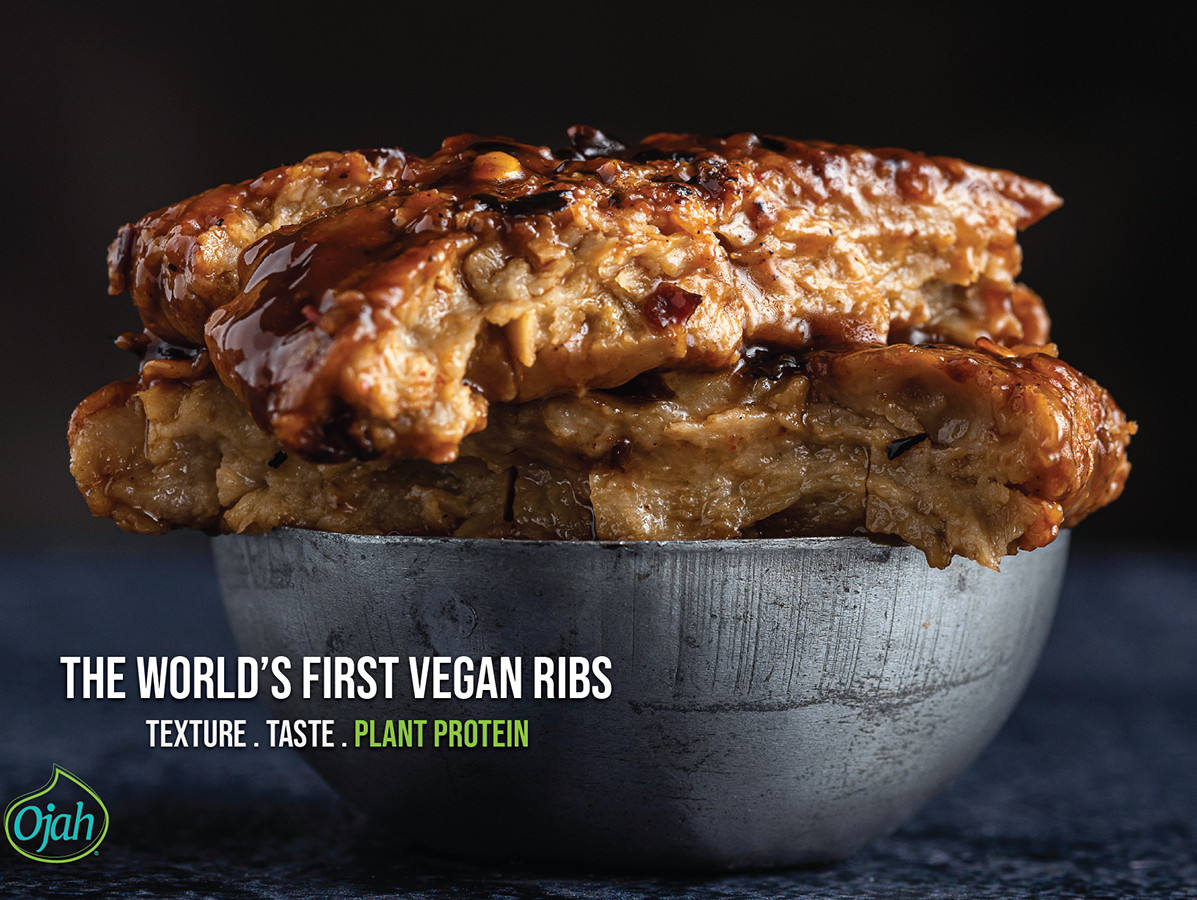
© Ojah
When asked where the biggest challenges lie in the development of 'plant-based', Jos Havekotte, Joeri Hollink and Chuck Muth appear to be pretty much in sync: everything revolves around taste and mouthfeel.
Jos Havekotte: "Our focus in product development is on further improving taste. The fact that salt use and saturated fats are increasingly under discussion in society makes that challenge even greater. We are also investigating how the structure and mouth feel of meat products can be approached even better. A good nutritional value of the products is essential for this; for the critical consumer it must be even better than the meat product", says Havekotte. "With many of our products, we have that under control, as well as the total declaration. This is partly because we are not dependent on the (im)possibilities of certain suppliers".
Joeri Hollink: "We judge our textures on all parameters; from the moment you bring it to your mouth, the first bite, the taste, the chewing, how the product falls apart, up to and including the swallowing. Only then do we look at whether and how we can translate a texture into a consumer concept. During the development of our new Heppi® concept, based on yellow peas and water, we were looking for a unique bite and a perfect mouthfeel. The texture, juiciness and consistency in your mouth of this 100% vegetable product, turns out to be the most similar to that of slowly cooked spareribs. ”
Chuck Muth: "Our challenge is to maintain our chosen approach to creating products that taste great and are made without GMOs, soy and artificially produced ingredients. Our work would be much easier if we could apply those ingredients, but that would make our message to consumers much more complicated. In the long run, we are better off with this choice".
Jos Havekotte agrees: "Transparency and the origin of the raw materials are also important points for us, as is sustainability. The soy we process is grown in Europe and is fully traceable. This soy is not processed with chemicals during extraction. The energy used in that process largely consists of renewable energy. Most of the products we can now also make are based on pea protein, also from Europe".
Also at Ojah they keep the products as pure as possible. Joeri Hollink: "Thanks to 'High Moisture Extrusion' (HME) we can make textures based on pea protein with long fibers that are connected to each other as one piece; without using additional ingredients. Apart from flavourings, nothing else has been added. End products that we have developed so far contain between 20 and 25% protein. With a minimal ingredient declaration, this innovation also meets nutritional requirements. The digestibility is not very different from other vegetable proteins. Regarding the PDCAAS (protein digestibility-corrected amino acid score), pea protein scores fine (0.89), but not the best. Soy protein scores much better here (0.98) than other vegetable proteins, sometimes even better than animal proteins.
"In terms of nutritional value, but also in terms of taste and application possibilities, meat substitutes are indeed crawling ever closer to meat products", confirms Jos Havekotte. "In my opinion, they should therefore no longer be on a separate shelf in the store for better acceptance. We prefer to see our fresh meat substitutes in the supermarket next to the regular minced meat, hamburgers and sausages."
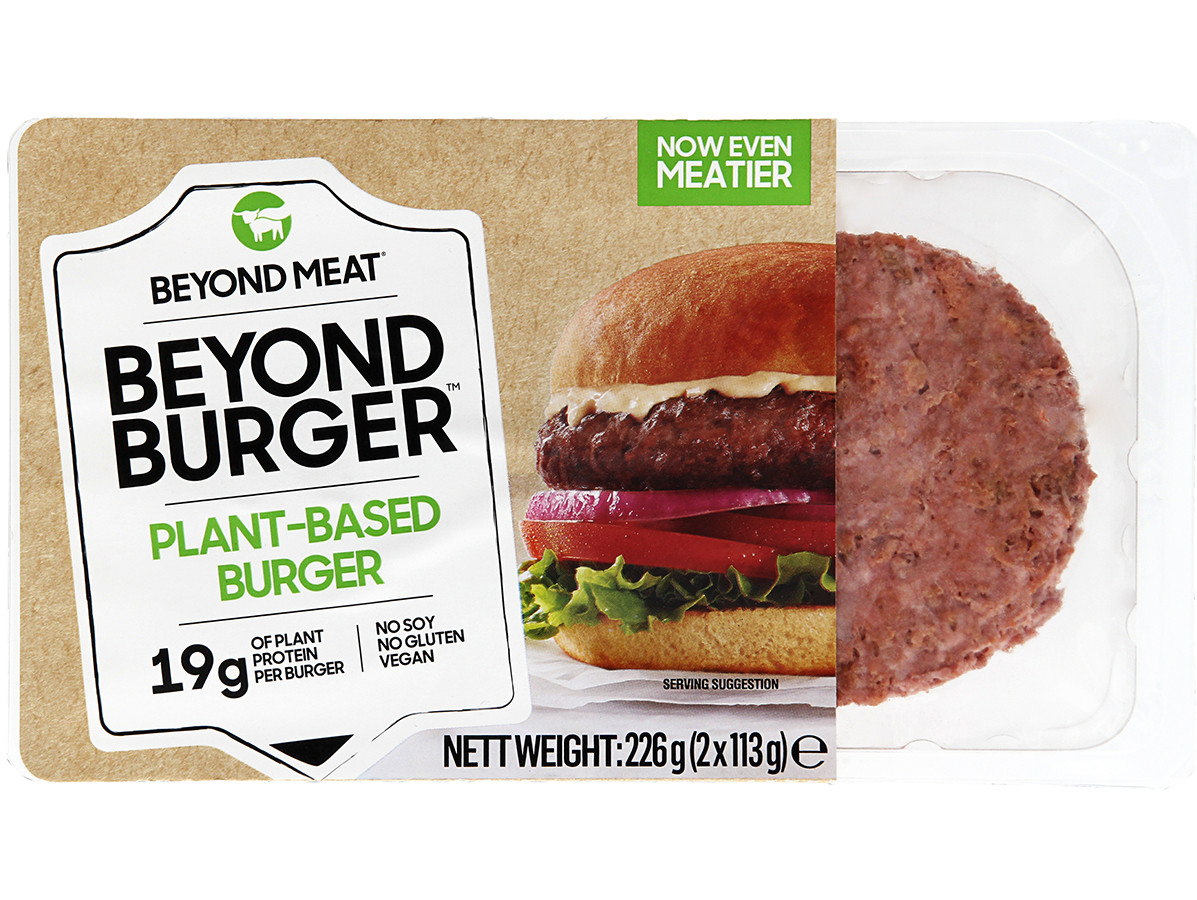
© Zandbergen World's Finest Meat
With that remark, we went from the laboratory through production to the supermarket: where the consumer makes his final choice. In spite of good intentions, the price remains the decisive factor in deciding whether or not something is put in the shopping cart.
Chuck Muth: "The price of our products actually has to come below that of animal protein if we want to achieve one of our most important goals: 'to increase the accessibility of vegetable protein'. The fact that we are not there yet has to do with scale. However, we have set an internal goal: 'to have at least one product in one meaningful category that is comparable to the animal protein equivalent by 2024'. We realize that in order to be successful, we have to win on taste and nutritional value, but ultimately also on price. If we can achieve these three things, we see an enormous opportunity for the consumer to switch from animal to vegetable meat".
Jos Havekotte: "There are many suppliers, the supply of meat substitutes is fragmented and the volumes are therefore now often too small to achieve a competitive price; an important condition for consumer acceptance. Fortunately, Jan Zandbergen has a strong sales organization; a prerequisite for achieving a critical scale".
While growth is solid, diversity in the vegetable assortment is expanding, entrepreneurs see plenty of opportunities and are working on scaling up, there is still no legal definition for 'vegan' or 'plant-based' in Europe. As early as 2011, the European legislator instructed the European Commission to issue an implementing act determining which foods are suitable for vegans and vegetarians (Regulation (EU) No 1169/2011). Preparatory work for the 'implementing act on the labelling of vegan and vegetarian food' was to start in 2019*. "To this day, there is still no legal European definition," says Marco Balhuizen of DVAN Advocaten. "The question is of course whether this is really necessary for a correct declaration of ingredients and allergens; for all food products, including vegetarian and vegan, the food information provided on the label should never be misleading".
This brings us to another point of discussion: the naming of these products. When are they misleading? Vegan ribs' is allowed, vegetarian minced meat is not. "There are both European and national protected designations," explains Marco Balhuizen. "Dairy names such as 'milk', 'butter' and 'yoghurt' are not allowed for non-dairy products throughout Europe. According to European rules, 'Milk' is reserved for 'products derived from the milk glands of an animal' and may therefore not be used to indicate a purely vegetable product'. (exception: coconut milk, because that is a commonly used designation). Also names reserved for meat products such as minced meat may not be used in combination with 'vegetarian'. Vegetarian variants of meat products that do not have a legal designation, such as 'burger' or 'schnitzel', may be used, provided it is clear that it is a vegetarian variant. This can be done by calling the product 'vegaschnitzel' or vegetarian schnitzel, for example".
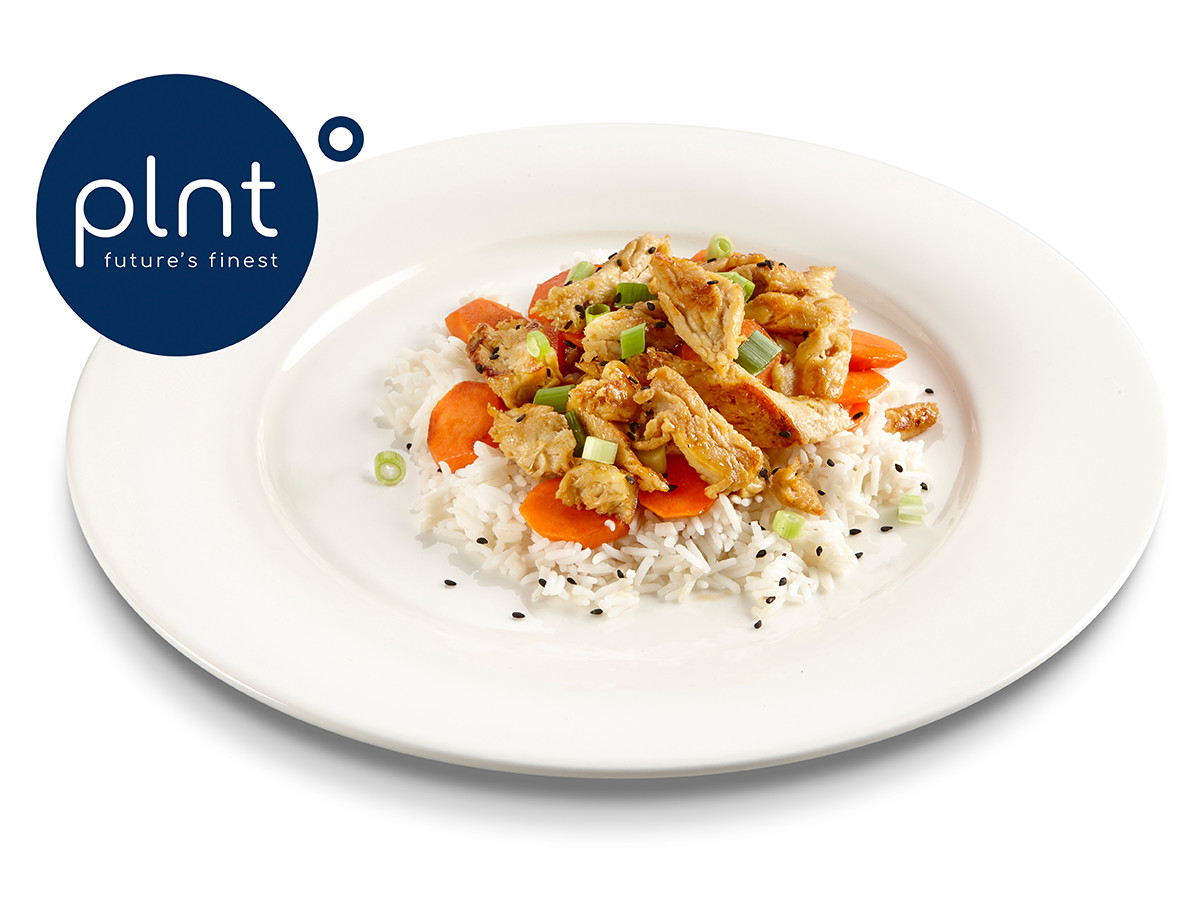
©Future Food Group
While the legislator continues to discuss the matter, the certification body BRCGS is already responding to this emerging market. On 1 January 2020 they released the 'Plant-Based Global standard issue 1'. This certification standard focuses on the production of end products, the production of ingredients for the foodservice market, PET foods and natural health products. And BRCGS does put a clear definition in it:
A plant-based product is: 'A product that does not intentionally contain materials of animal origin, and has not intentionally used ingredients (including additives, carriers, flavorings, and enzymes), processing aids, or any other substances that are of animal origin, at any stage during production and processing'.
Aldo Rus, KTBA: "The point is this: if you call a product 'plant-based', you tell the consumer that it does not contain any ingredients of animal origin. So you stick to that. With this standard you show the retailer and the consumer that your products are produced in a BRCGS-worthy way. This is especially useful if you make plant-based products on the same equipment or in the same rooms where animal products are also produced. Then the risk of cross-contamination is high. The standard is supplementary, specifically aimed at expansions of the Food Safety Management System with a 'Plant Based Management System'. As a producer, you must therefore already have a GFSI certificate or a global markets program (such as BRC START!) at intermediate level. It's all still very new: so far KTBA has not received any applications to help producers with certification for this standard".
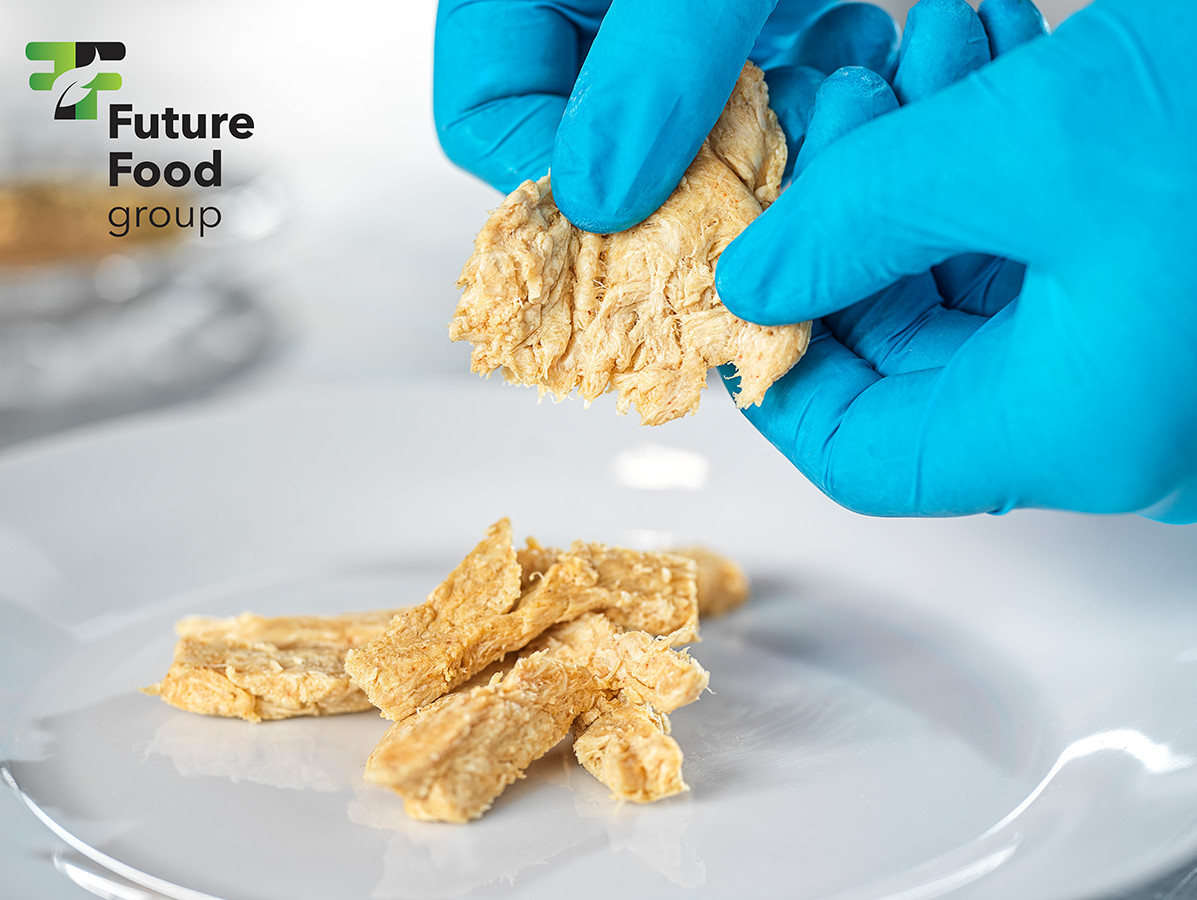
©Future Food Group
What do the producers expect for the future? How will our diet change?
Havekotte: "The new generation of young buyers more often choose stir-fry and wok dishes, or pasta/noodles instead of a meal with potatoes, vegetables and meat like their (grand)parents. Meat is not the center of the plate, but just an ingredient; easy to exchange for a meat substitute or another sustainable source of protein. Consumers are more likely to make more conscious choices: for less meat, but of a better quality. Meat will also become more expensive in the coming years. The price mechanism of affordable meat substitutes compared to more expensive meat will, I expect, give an extra impulse to the sale of meat substitutes. I think that in the coming years more and more meat eaters will opt for a meat substitute once or twice a week".
Chuck Muth also believes in the growth potential of meat substitutes: "The demand for vegetable meat has risen considerably in recent years, the category is ready for extra growth. In 2019, plant-based meat substitutes accounted for 1% of the USD 14 billion global meat industry. Barclays predicted that the category could capture 10% of the market by 2029. European demand for vegetable meat substitutes continues to grow. Retail sales of the product category are expected to exceed 250 million euros in 2022.
Joeri Hollink: "I expect the best opportunities for the industry for the next five years in capacity and quality. The demand for good meat alternatives is greater than the current supply, but there are many innovative high-quality meat alternatives. They often come from relatively young companies. Demand is rising faster than capacity can be built by these young companies. In other words: in my opinion, there are enormous opportunities here for the 'established' industry to connect to the largest growth market of this century. After all, many meat processing companies have the equipment and infrastructure in-house to produce and market excellent quality meat alternatives. A pitfall for this industry is to compete directly on price with the current consumer offer. This results in low margins, poorer quality ingredients, reduced nutritional value, low quality meat alternatives and, in the longer term, no longer meets the wishes of the consumer. My advice: invest in good ingredients (local, nutritional and functional), develop organoleptically high-quality meat alternatives and distinguish yourself from the existing supply. The production costs may then be slightly higher, but I expect that consumers will not ignore such new products".
* said the European Commission in 2017 (p. 19) in its summary of the fitness and performance regulatory programme scoreboard, published as part of the ongoing REFIT programme, which in turn aims to set EU regulations and make policy-making more efficient.
Source: Vakblad Voedingsindustrie 2020